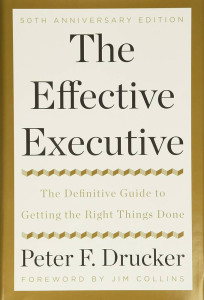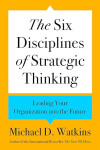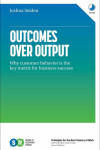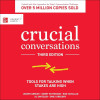The Effective Executive
The Definitive Guide to Getting the Right Things Done
"The Effective Executive" by Peter Drucker is a seminal work on management and leadership that has stood the test of time since its publication in 1966. Drucker challenges the notion that executives are born, asserting instead that effectiveness can be learned. The book focuses on five key practices: managing time, choosing what to contribute, knowing where and how to mobilize strength for best effect, setting the right priorities, and knitting all of them together with effective decision-making. Drucker's insights are drawn from his extensive experience consulting with large corporations and are applicable to knowledge workers at all levels, not just those with "executive" in their title. The book's enduring relevance lies in its focus on timeless principles rather than specific tactics, making it as valuable today as it was over half a century ago.
"The Effective Executive" is a guide for anyone responsible for getting things done, especially those who focus on a few priorities that can make the biggest impact. An executive is defined not just by position but by their ability to make things happen in an organized, productive manner.
By reading "The Effective Executive", you will:
- Master time management as an executive: Learn to analyze, consolidate, and prioritize your time to focus on activities that generate the highest impact.
- Develop systematic decision-making skills: Understand how to make strategic decisions that drive organizational success through a clear process of analysis and execution.
- Learn to leverage strengths: Discover how to identify and deploy both personal and organizational strengths while making weaknesses irrelevant.
- Build effective contribution habits: Understand how to focus on outward contribution rather than just task completion, leading to meaningful organizational impact.
If you have the time to only read one book, I definitely encourage you to read this one.
Books to follow for more:
- "The Practice of Management" by Peter Drucker: The foundational work that establishes many of the management principles expanded upon in "The Effective Executive". Particularly valuable for understanding the broader context of organizational management and the role of the executive within it.
- "Managing Oneself" by Peter Drucker: A deeper dive into the self-management principles introduced in "The Effective Executive". Essential for mastering personal effectiveness before attempting to lead others.
- "High Output Management" by Andrew Grove: Provides practical implementation of Drucker's principles in a technology company context. Grove, former CEO of Intel, takes Drucker's concepts and shows how they work in fast-paced, modern organizations. Particularly valuable for those in technical leadership positions.
- "Deep Work" by Cal Newport: Builds upon Drucker's time management principles for the modern knowledge worker. Newport expands on how to create the uninterrupted blocks of time that Drucker advocates for, making these concepts especially relevant in today's distraction-rich environment.
- Effectiveness is a learnable skill: Drucker challenges the notion of natural-born leaders, asserting that anyone can become an effective executive through deliberate practice and self-reflection.
- Time is your most critical resource: Learn to guard your time fiercely, eliminating time-wasters and focusing on high-impact activities that truly matter.
- Embrace a strengths-based approach: Instead of fixating on weaknesses, discover how to leverage your own strengths and those of your team for maximum productivity.
- Prioritize opportunities over problems: Shift your focus from firefighting to opportunity-seeking, driving breakthrough results rather than merely maintaining the status quo.
- Decision-making is a structured process: Move beyond gut instinct by adopting a systematic approach to decision-making, starting with clearly defined problems and ending with actionable plans.
What defines an effective executive according to Drucker?
An effective executive is someone who gets the right things done. They focus on contribution, leverage strengths (their own and others’), set and stick to priorities, make effective decisions, and take responsibility for communication and results.
How can one manage time more effectively?
Drucker suggests starting with a time audit to understand where time is actually spent. Then, systematically eliminate time-wasters, consolidate discretionary time into large chunks, and delegate tasks that others can handle. The goal is to create uninterrupted periods for high-impact work.
Why does Drucker emphasize focusing on opportunities rather than problems?
Focusing on opportunities produces results, while solving problems merely prevents damage. By concentrating on opportunities, executives can achieve breakthrough performance and drive the organization forward, rather than merely maintaining the status quo.
How should executives approach decision-making?
Drucker outlines a systematic approach: define the problem, specify the boundary conditions (minimum goals to be met), start with what’s right rather than what’s acceptable, convert the decision into action, and build feedback into the decision to continually test its validity against outcomes.
What role does self-development play in executive effectiveness?
Self-development is crucial. Drucker argues that effectiveness must be learned and continuously improved. This involves regular self-assessment, seeking feedback, and deliberately practicing the habits of effective executives. It’s an ongoing process, not a one-time achievement.
Q: Why focus on strengths rather than weaknesses?
A: Organizations succeed by making strengths productive while making weaknesses irrelevant. Trying to fix all weaknesses leads to mediocrity.
- When transitioning from individual contributor to management role: Provides essential frameworks for shifting focus from doing to enabling.
- When feeling overwhelmed by executive responsibilities: Offers practical techniques for time management and priority setting.
- When struggling with organizational decision-making: Presents systematic approaches to making and implementing decisions.
- When building a knowledge-worker organization: Helps understand how to maximize knowledge worker effectiveness.

Your support helps me maintain and improve the book recommendations for everyone.






